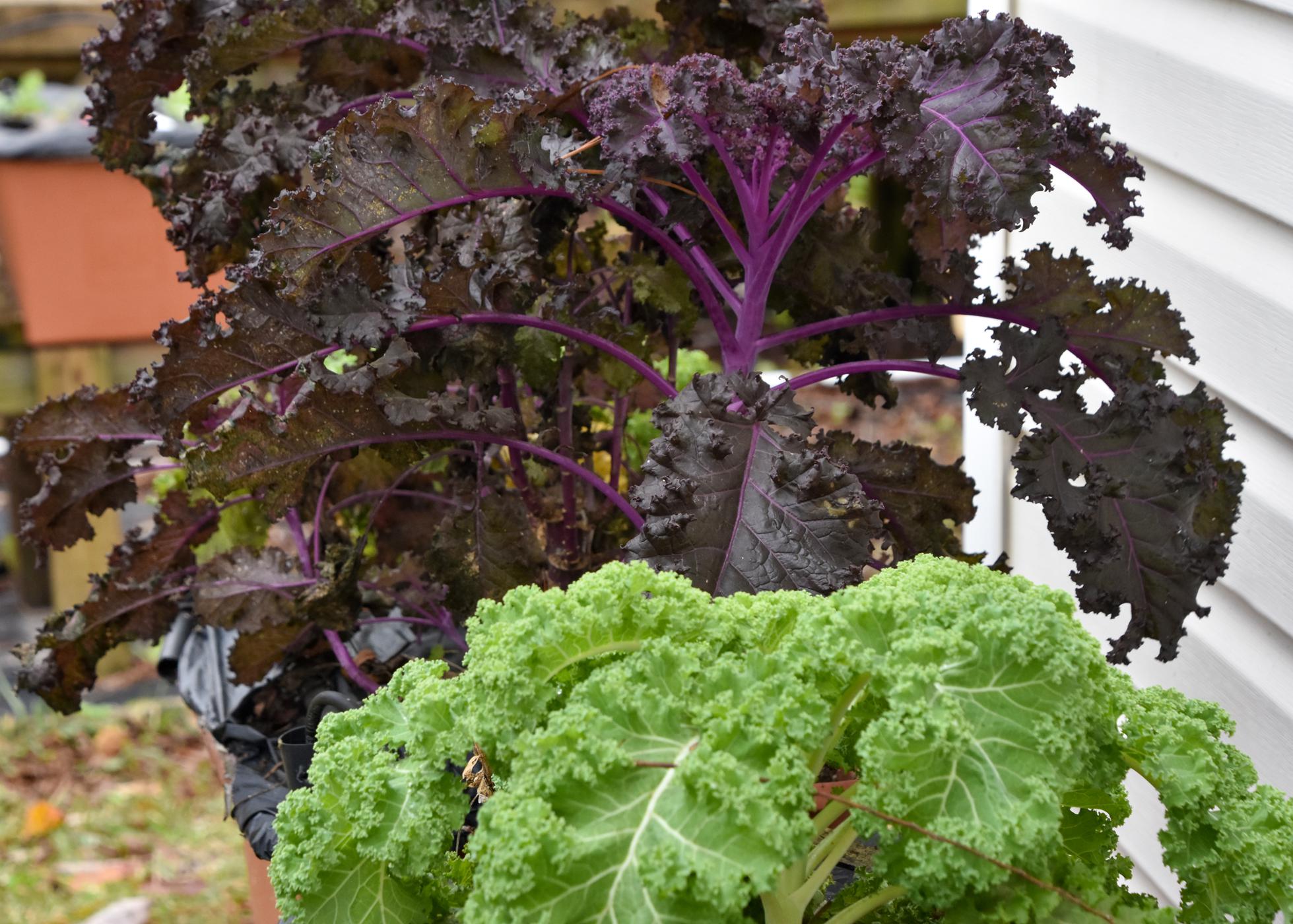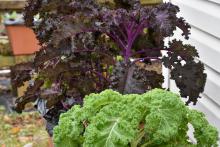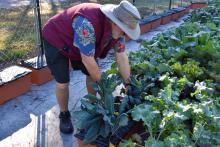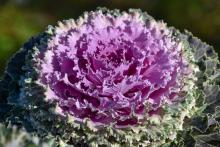Information Possibly Outdated
The information presented on this page was originally released on October 12, 2020. It may not be outdated, but please search our site for more current information. If you plan to quote or reference this information in a publication, please check with the Extension specialist or author before proceeding.
Tasty, nutritious kale brings garden beauty
This weekend, I was excited to see that one of my favorite fall/winter vegetables is beginning to play a prominent role -- if not center stage -- in my ornamental landscape and culinary garden. Of course, I’m referring to kale.
Kale is a versatile plant, and its uses in our gardens and landscapes seem endless. Imagine Bubba talking about shrimp in the movie “Forrest Gump.” Kale has just about as many uses as Bubba lists for shrimp.
Kale has been the rage among the hipster crowd as the latest super food that everyone should be eating. The super food label is not far from the truth.
When looking at the nutritional benefits of consuming kale, consider these numbers. A cup of raw kale has 30 calories with 2 grams of fiber and 3 grams of protein. Its vitamin count is through the roof: vitamin A greater than 200% of the recommended daily allowance, or RDA; vitamin K greater than 600% RDA; vitamin C greater than 100% RDA; vitamin B complex 5 to 10% of RDA; plus calcium, potassium, magnesium and the micronutrients manganese and copper.
Kale is also loaded with antioxidant phytonutrients beta carotene, flavonoids and polyphenols.
Kale has a reputation for having a strong flavor, and some folks may find that a bit disagreeable. If the leaves are harvested when small, that flavor is less intense. I like to brown a couple of pieces of bacon -- since bacon makes everything taste better -- before adding the kale leaves to cook.
One variety I love for the table is Toscano or dinosaur kale. I don’t know if it’s been around since the dinosaur; if so, then Og was eating well. This selection has long, linear leaves that are a really deep, dark green. Other culinary types I like are flat-leaved Siberian and Hanover.
Some of the best growth and performance I get is by planting kale in self-watering boxes, which you might recall is my favorite home growing system.
Kale is ideal for the edible landscape, where we can enjoy it for its aesthetics as well as its culinary appeal. When used as ornamentals, I like to let the kale plants get big and really show off their ruffled and textured leaves and vibrant colors. When we start getting the colder winter air, kale colors will intensify.
Some of my favorite ornamental selections are the ruffled Redbor (a Mississippi Medallion winner), Starbor and Winterbor. These varieties form loose heads.
I also like the head-forming selections on the market. A long-time, must-grow in my garden is the Nagoya series, which is available in white, pink and red. A selection that is sometimes hard to find is the Chidori series with bold red, magenta and fuchsia foliage.
I make my world-famous crispy kale chips with the plants I grow as ornamentals. I’ll share tips on this tasty treat on the Southern Gardening Facebook (@SouthernGardening) and Instagram (@southerngardening) sites.
Next week, I’ll continue this edible landscape theme with easy planting and growing recommendations for various other fall garden greens.





